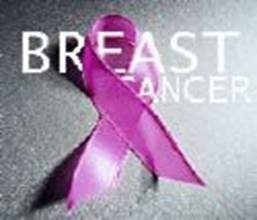Charlena Owens
Florida Agricultural and Mechanical University
(BLACK PR WIRE/FAMU-TALLAHASSEE) – Have you noticed the color pink everywhere? On the backs of cars, pinned to the shirts of men and women? You guessed right! It’s Breast Cancer Awareness Month. Breast cancer is the second common cause of cancer among African American women, followed by lung cancer.
According to the American Cancer Society (ACS.org), African Americans have the highest death rate and shortest survival of any ethnic or racial group for most cancers. It is estimated that over 19,000 new cases of breast cancer are expected to occur among African American women in 2009. Of these 19,000 cases, 6,020 of the cases will be fatal.
Breast cancer is formed by a group of diseases, in which cells in the tissues of the breast become abnormal and divide without order or control. These malignant cells form too much tissue and become a tumor. The tumor can grow into nearby tissue or cells, break away and enter the bloodstream or lymphatic system, eventually affecting other organs.
The U.S. Department of Health and Human Services states that all women are at risk of breast cancer. African American women are less likely to get breast cancer, but they are more likely to die of breast cancer. Part of the reason is that African American women have faster growing tumors.
ACS.org states that 5 to 10 percent of breast cancer victims are thought to be linked to inheritance and mutation of the gene. The most common gene changes are BRCA1 and BRCA 2. Labtestonline.com states that the tests for BRCA-1 and BRCA-2 can tell you if you have mutations in either of these two genes that have been connected to the development of breast and ovarian cancer. Women who carry these genes have an 80 percent change of getting breast cancer during their lifetime.
Breast cancer risk is higher among women who have a blood relative with the disease. Women who currently have breast cancer in one breast have a greater chance of getting it in the other breast or in another part (recurrence) of the cancer-ridden breast. Women with dense breast tissue (more gland tissue and less fatty tissue) as well as women who began having periods before age 12, or those who went through menopause after age 55, are also at higher risk.
Unfortunately, there isn’t a guaranteed way to prevent breast cancer but there are ways for women to detect the disease, such as regular mammograms as well as living a healthy lifestyle. A recent study was published in the American Journal of Clinical Nutrition studying 50,000 African-American women. Researchers found that thinner and younger women who ate a generally "prudent" diet – which includes fruits, vegetables, whole grains, and is low in sweets and processed meats – were less likely to develop breast cancer than their counterparts who maintained a more Western-style diet.
Some signs and symptoms to look for include:
• New lumps in the breast, or underarm (armpit) swelling of part of the breast.
• Irritation or dimpling of breast skin.
• Redness or flaky skin in the nipple area or the breast.
• Pulling in of the nipple or pain in the nipple area.
• Nipple discharge other than breast milk, including blood.
• Any change in the size or the shape of the breast.
• Pain in any area of the breast.
To find out more information on breast cancer or any cancer, you can visit the American Cancer Society at www.cancer.org.
